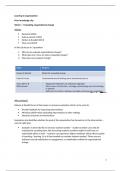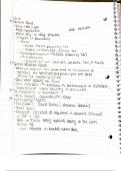College aantekeningen
LIO, blok 1 (Master Educational Sciences)
- Instelling
- Universiteit Utrecht (UU)
This document comprises very detailed lecture notes with thorough explanations. It has shown to be a great preparation resource for the LIO exam (Master in Educational Sciences).
[Meer zien]













